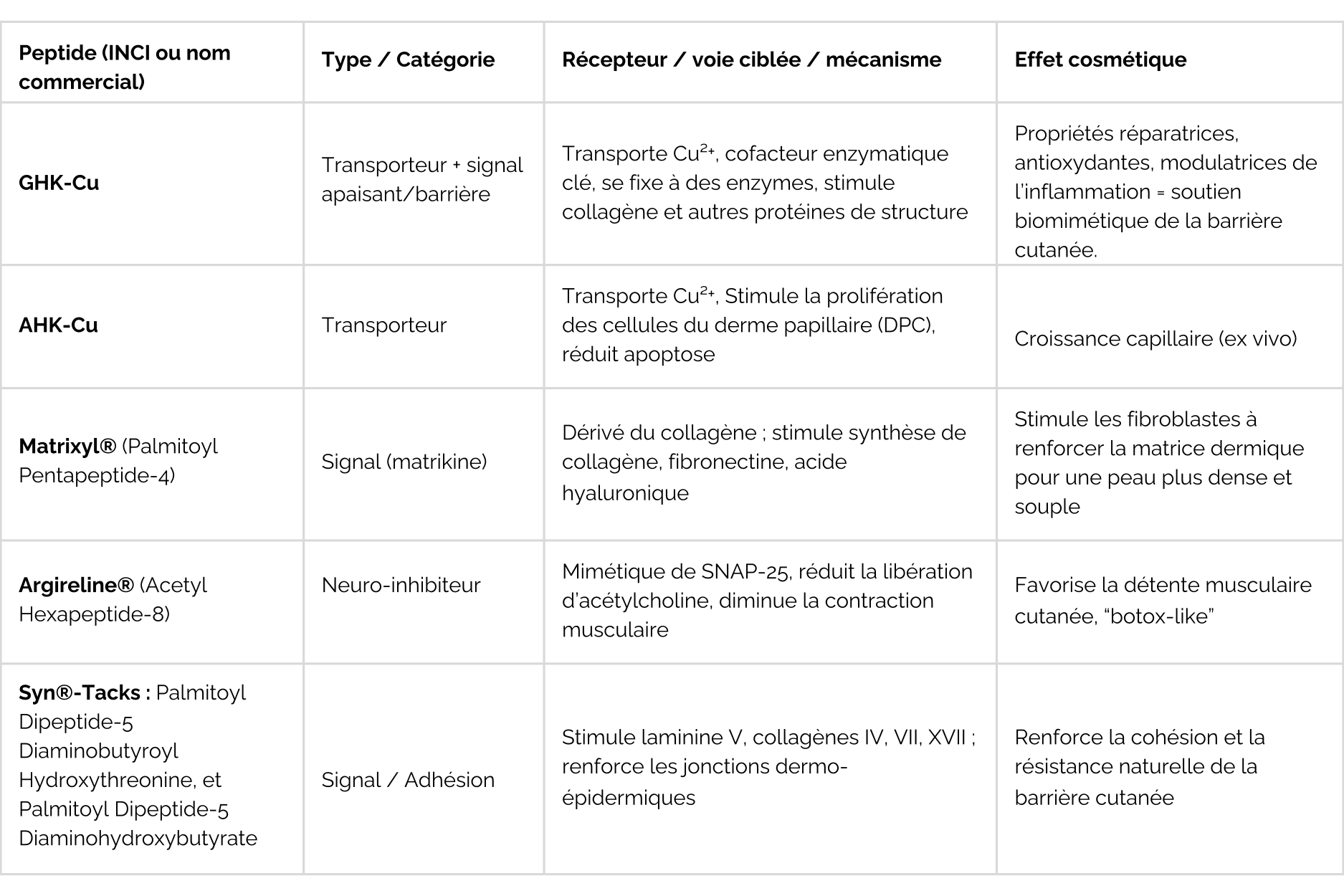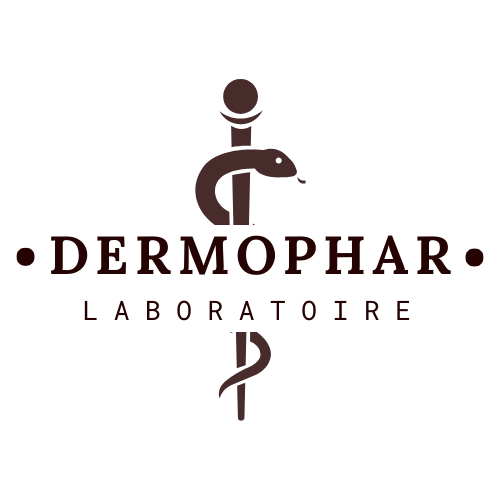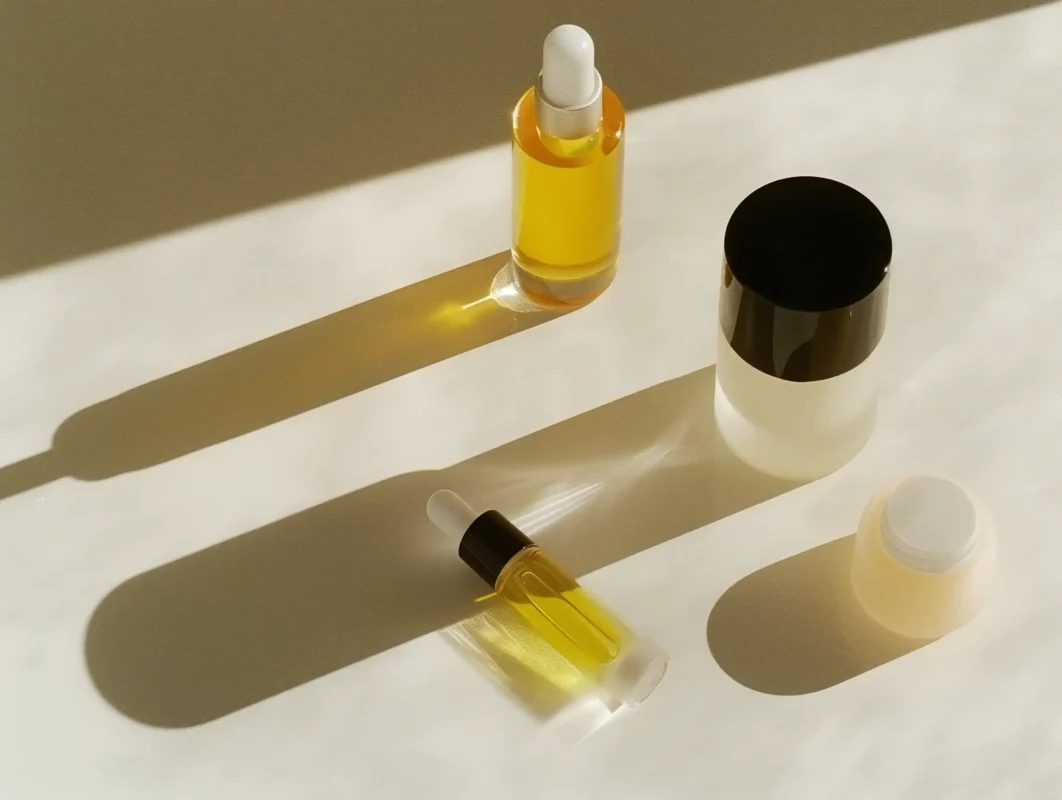Products & Trends, Science & Innovation
Peptides: the high-tech promise that speaks the language of the skin
We've been hearing about "peptides" for a few years now, but what do they really do, and how can they be intelligently integrated into a dermo-cosmetic routine and an effective formula? An overview of their mode of action, benefits and products from French Pharmacy that are already best sellers thanks to the remarkable effectiveness of these high-tech molecules.
What is a "peptide"?
Peptides are short chains of amino acids (minimum 2 amino acids) - in other words, fragments of proteins. The difference between peptides and proteins lies in size and structure. We speak ofoligopeptides when the AA chain is less than 10-20 AA, from polypeptides above 20 and protein from 50 AA. Their interest in cosmetics: they can mimic biological signals that the skin understands very well. Unlike traditional active ingredients which "correct" a defect (e.g. smoothing wrinkles with keratolytic active ingredients), a peptide acts at the source of the imbalance, targeting the cell involved in the biological process at the origin of the identified imbalance (e.g. wrinkles are no longer smoothed on the surface, but collagen production is encouraged).
A well-designed peptide speaks to a precise receiver (integrins, TGF beta receptors...) and triggers a targeted response: collagen synthesis, calming of inflammation, better repair, smoothing effect...
Read morePeptide families (and what they really do)
There are several families of peptides for "cosmetic" use. They are classified by mode of action.
-
Signal peptides : these peptides trigger cellular pathways by binding to specific receptors, boosting activity (e.g. on fibroblasts to boost collagen production)
-
Transport peptides : provides ions useful for the activity of certain cells, indirectly promotes the production of molecules of interest (e.g. collagen...)
-
Neuromodulating peptides: sequences that attenuate the release of certain neuromediators (e.g. Acetylcholoine at the neuromuscular level for a botox-like effect)
-
Barrier and soothing peptides: biomimetic sequences that modulate inflammation and reinforce structure.
To increase efficacy, peptides are often combined and "grafted" with anchoring patterns (e.g. RGD for integrins = Arginine + Glycine + Aspartic acid) and lipid chains.
The lipid chains added to peptides improve skin penetration, while the anchoring motifs enable the peptide to bind specifically to certain receptors that recognize them (imagine a "key-lock" couple). These more targeted peptides are more effective than peptides without anchoring motifs.
KEYWORDS

How can you incorporate peptides into your skincare routine?
- Morning: pro-collagen / barrier peptides under SPF. Very good tandem with niacinamide and hyaluronic acids.
- Evening: peptides + mild retinoids (if skin has been trained) for collagen-remodeling synergy; or alternately with acids (AHAs) (or in your cleanser).
- Sensitive / post-acute skin: use soothing biomimetic peptides in minimalist textures.
The tip: the peptides like regularity (8-12 weeks) more than concentration shocks!!!!
How to formulate peptides intelligently
- Promoting bioavailability : sequences transplants (e.g. palmitoyl-...+ anchoring motif) to encourageskin-peptide interaction
- Galenics: create "vehicle" textures to enhance active ingredient penetration, and physiological pHs to improve stability.
- Proof going beyond in vitro tests clinical evidence in vitro
- Couple peptides with "corrective" active ingredients (HA, Retinol, Niacinamide, etc.) for synergistic action and short-, medium- and long-term results.
(Re)discover our articles dedicated to these star active ingredients from French Pharmacy: retinol and vitamin C
French Pharmacy and peptides
Laroche Posay & Neurosensine
The famous brand incorporates its Neurosensine dipeptide into one of its best-sellers: Dermallergo Serum from the Tolériane range. The dipeptide (INCI ACETYL DIPEPTIDE-1 CETYL ESTER) consists of an arginine and tyrosine unit grafted with an Acetyl- (N-trminal) and Cetyl ester (C16) unit:
- the acetyl group protects the peptide from enzymatic degradation
- Cetyl-ester lipid chain increases lipophilicity and skin penetration
- the arginine-tyrosine dipeptide is the bioactive part of the molecule and binds to cutaneous sensory receptors to reduce hyperreactivity
👩🏻⚕️Ce peptide is not patented by L'Oréal and is readily available from many suppliers. The name Neurosensin, on the other hand, is protected.
SVR & the "snake venom" peptide
The best-selling Pepti Biotic contains a well-known peptide which mimics the effect of Waglerin-1 toxin (snake venom). It's a "neuro-inhibitor" peptide (INCI Dipeptide Diaminobutyroyl Benzylamide Diacetate) whose action aims to relax muscular micro-contractions to smooth fine lines and wrinkles. A reversible, surface Botox-like effect.
- a diacetate group for improved stability and incorporation into formulas
- Benzylamide: improves cell affinity and bioavailability, not a "specific receptor" as seen above.
👩🏻⚕️Ce peptide is ultra-common and offered by dozens of different suppliers.
Uriage and Tetrapeptide-4
The laboratory won the "best pharma product 2025" award for its Age absolu - Sérum micro-redensifiant booster collagène formula, which concentrates several stars of anti-ageing dermo-cosmetics:
- Tetrapeptide-4: a simple, non-grafted peptide with anti-aging properties
- retinyl palmitate (an ultra-stable, well-tolerated retinol derivative)
- hyaluronic acid
- vitamin C & E
- Uriage thermal spring water
👩🏻⚕️On Tetrapeptide-4 is available from a number of suppliers (often in combination), including Evonik (TEGO Pep UP).
Sources
Skibska A, Perlikowska R. Signal Peptides - Promising Ingredients in Cosmetics. Curr Protein Pept Sci. 2021;22(10):716-728. doi: 10.2174/1389203722666210812121129. PMID: 34382523.
He B, Wang F, Qu L. Role of peptide-cell surface interactions in cosmetic peptide application. Front Pharmacol. 2023 Nov 13;14:1267765. doi: 10.3389/fphar.2023.1267765. PMID: 38027006; PMCID: PMC10679740.
Wang L, Wu Z, Wang X, Wang X, Mao J, Yan Y, Zhang L, Zhang Z. Overview of Peptides and Their Potential Roles in Skin Health and Beauty. J Pept Sci. 2025 Feb;31(2):e3668. doi: 10.1002/psc.3668. PMID: 39777813.


